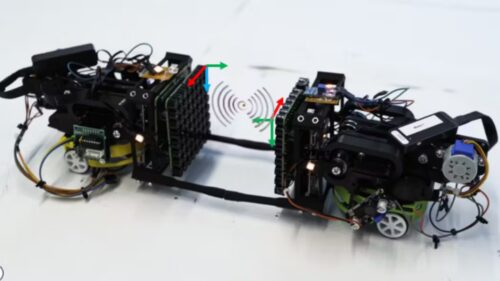The robots use sound to lift and move things without touching them. They can work alone or together to carry objects.

Robots that work together can now levitate and move objects without touching them, using only sound waves. Inspired by how ants carry loads as a group, researchers at University College London developed a swarm robotics system for contactless cooperative transport. The system uses ultrasound to trap and move lightweight items through the air, offering a new method for precise, hands-free material handling.
The robots rely on ultrasonic transducers—devices that emit high-frequency sound waves beyond human hearing. When synchronized, they create acoustic pressure fields strong enough to hold and lift small objects in mid-air. Each robot carries a set of transducers and can control these invisible fields to move objects without any physical contact.
The team tested two modes: one where a single robot handles the object, and another where multiple robots synchronize their sound fields to transport larger or more complex objects together. The cooperative mode proved more powerful, but also required microsecond-level timing precision. To achieve this, the researchers used FPGAs and infrared signals to keep all robots precisely aligned in time.
To check the system’s performance, the team measured sound field stability with microphones, tracked object movement using motion capture, and verified synchronization with an oscilloscope. Both solo and group transport worked reliably.
This early-stage research could lead to practical uses in micro-assembly, clean-room manufacturing, and medical environments, where fragile or sterile items must be handled carefully without touch.
The idea came from observing how insects like ants work together to lift loads too heavy for one. By applying this natural model, engineers created a robotic system that may one day match the coordination and effectiveness of insect swarms.







